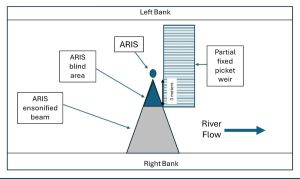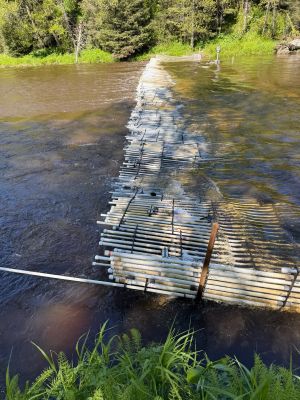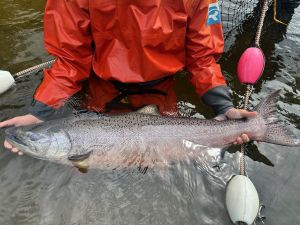
Anchor River
Other Tools
Other Tools
We prefer to use floating video weirs over sonar to monitor migrating salmon because they allow us to get a precise count of every fish that swims by and to easily identify fish by species. But in general, we can only use weirs in narrow rivers or tributaries. In the Anchor River we can use a weir for all but the first few weeks of the field season when water levels are high due to snowmelt. Once the water level subsides, a 140-foot weir is installed to replace the site’s sonar.


The weir acts like a fence that prohibits upstream fish migration except through a narrow chute that is fitted with an underwater video camera. The video weir uses DVR technology to record a video each time motion is triggered by a fish swimming through the passage chute. Video quality is good enough that species are easily identified and counted.
Collecting Data Samples

Throughout the field season we also capture Chinook using a beach seine to collect age, length, and sex data. This information helps us determine how many Chinook need to reach spawning grounds each year to maintain a sustainable fishery. In general, the river is beach seined for Chinook Salmon twice a week starting in the beginning of June and continuing through mid-July.
